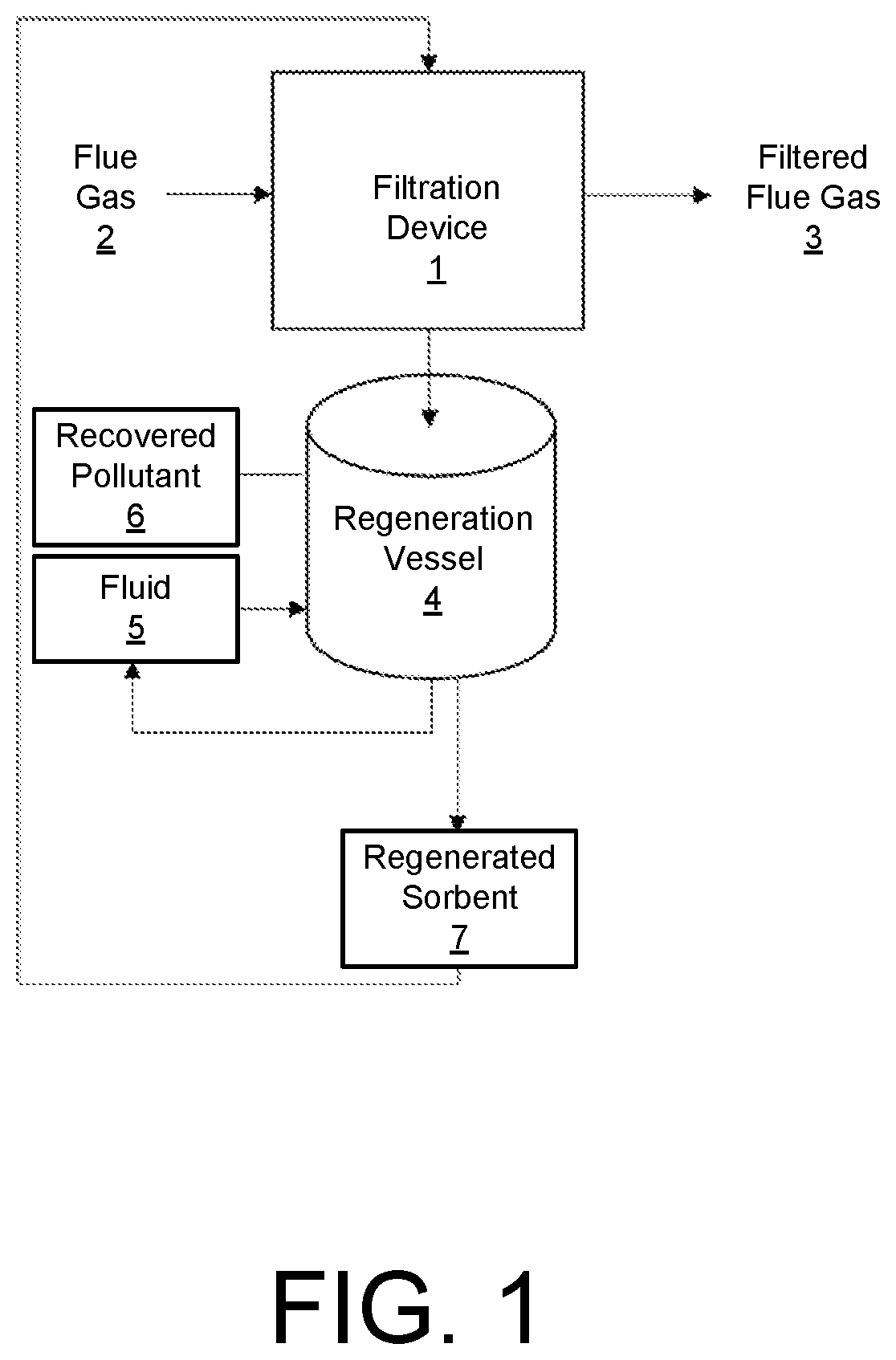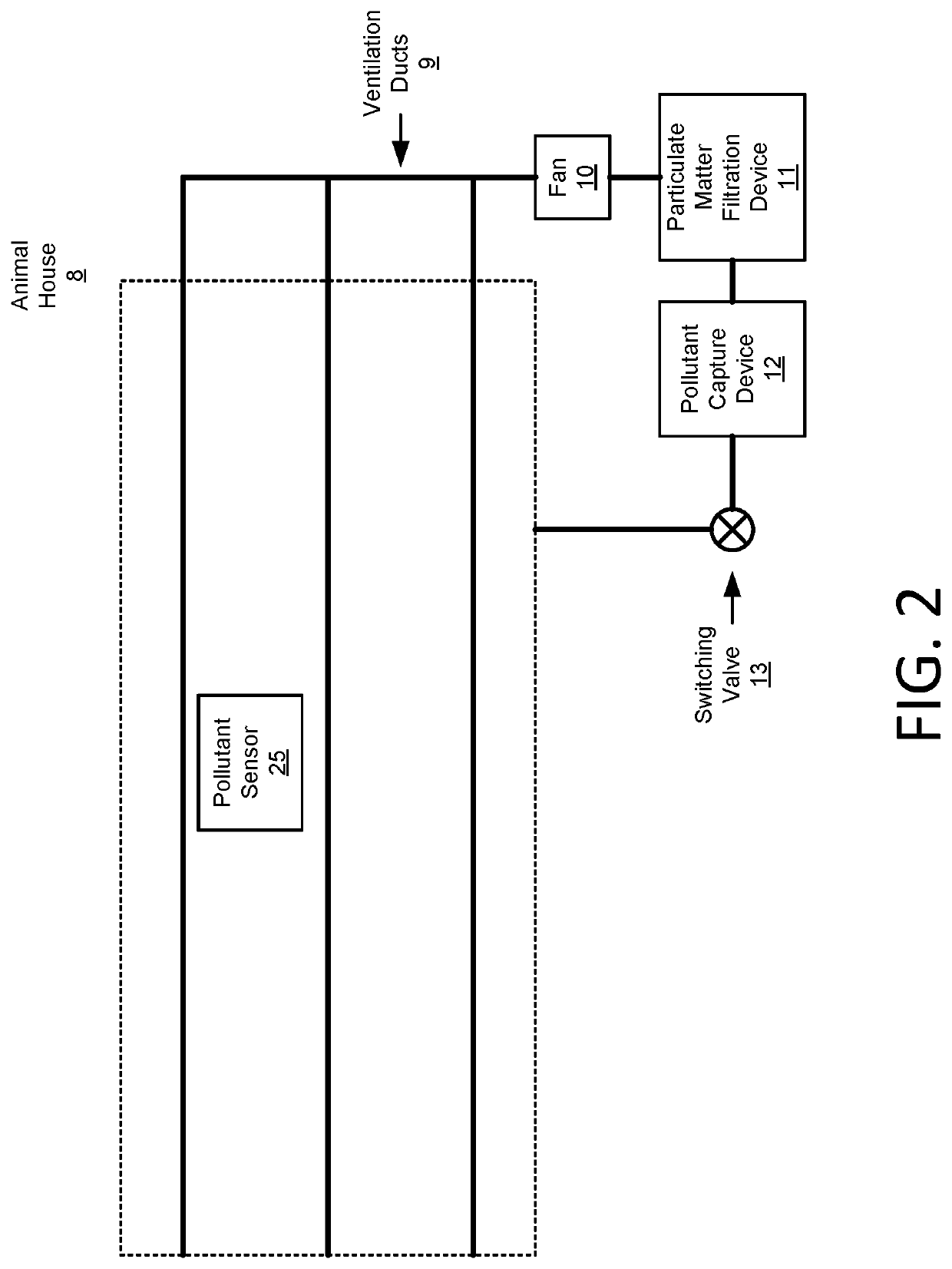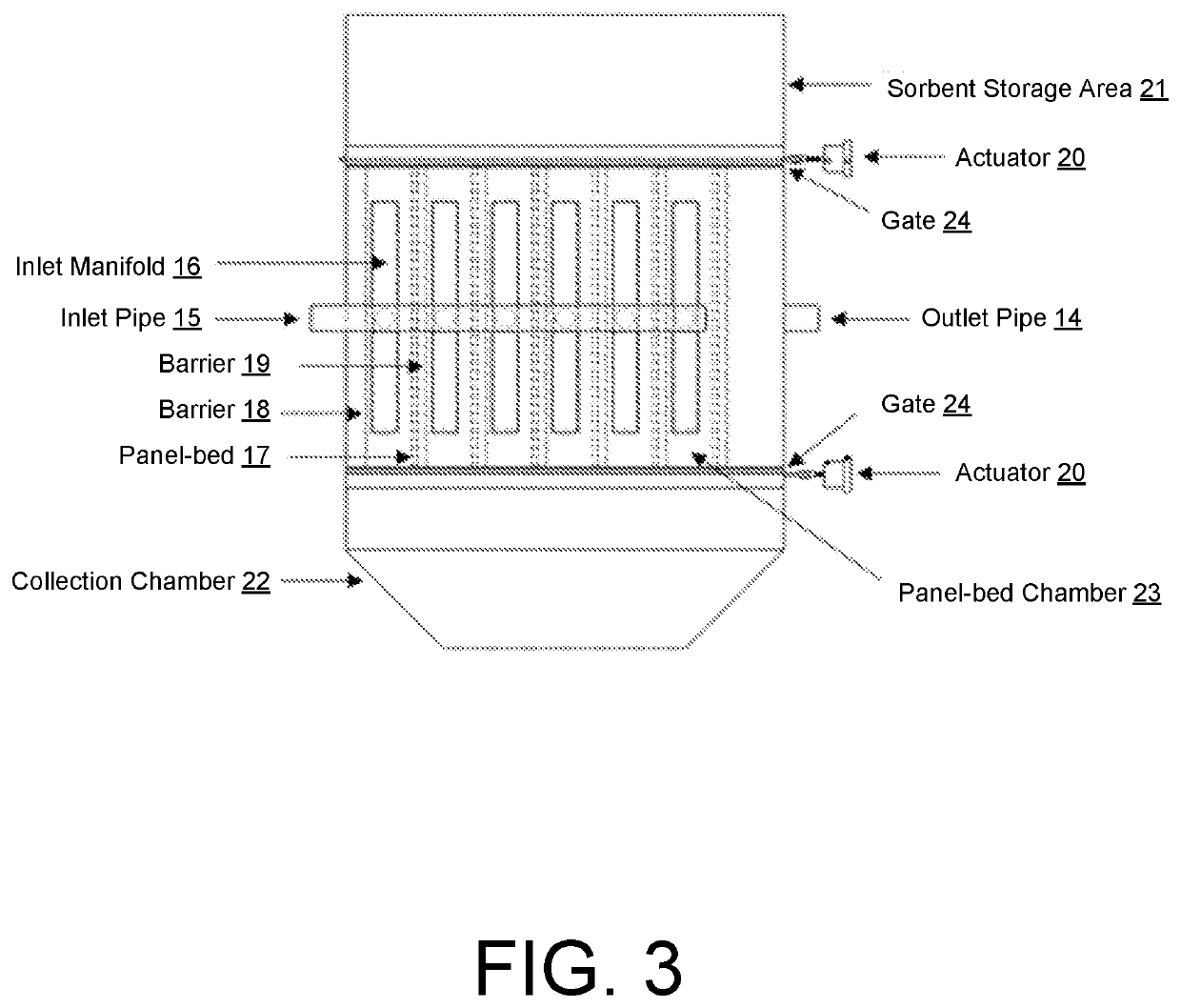Collecting a gaseous pollutant from air within an animal enclosure
a technology for collecting gaseous pollutant and animal enclosure, which is applied in the direction of combustible gas purification/modification, other chemical processes, separation processes, etc., can solve the problems of ammonia emissions, health concerns, and contribute to negative climate effects, so as to reduce atmospheric emissions, improve indoor air quality, and increase animal performance
- Summary
- Abstract
- Description
- Claims
- Application Information
AI Technical Summary
Benefits of technology
Problems solved by technology
Method used
Image
Examples
Embodiment Construction
[0033]Embodiments of the disclosure provide systems and methods for the capture of gaseous and / or solid pollutants from an enclosed area. The gaseous pollutants may include ammonia, carbon dioxide, and similar gaseous pollutants. Solid pollutants may include any size of particulate matter. The source of the pollutants may be within the enclosed area. The source of the pollutants may be waste from concentrated feeding animal operations or other sources. In this disclosure, the animals are sometimes described as poultry. However, is should be understood that the disclosed technologies apply to animals other than poultry as well.
[0034]The system may collect polluted air through one or more air filtration devices, such as a series of ducts for filtration in a panel-bed device that may use solid sorbents placed in vertical beds arranged horizontally in a compact system. Each panel consists of two mesh screens that are separated by a distance equivalent to the desired sorbent bed depth, t...
PUM
| Property | Measurement | Unit |
|---|---|---|
| Elevation | aaaaa | aaaaa |
Abstract
Description
Claims
Application Information
 Login to View More
Login to View More - R&D
- Intellectual Property
- Life Sciences
- Materials
- Tech Scout
- Unparalleled Data Quality
- Higher Quality Content
- 60% Fewer Hallucinations
Browse by: Latest US Patents, China's latest patents, Technical Efficacy Thesaurus, Application Domain, Technology Topic, Popular Technical Reports.
© 2025 PatSnap. All rights reserved.Legal|Privacy policy|Modern Slavery Act Transparency Statement|Sitemap|About US| Contact US: help@patsnap.com



